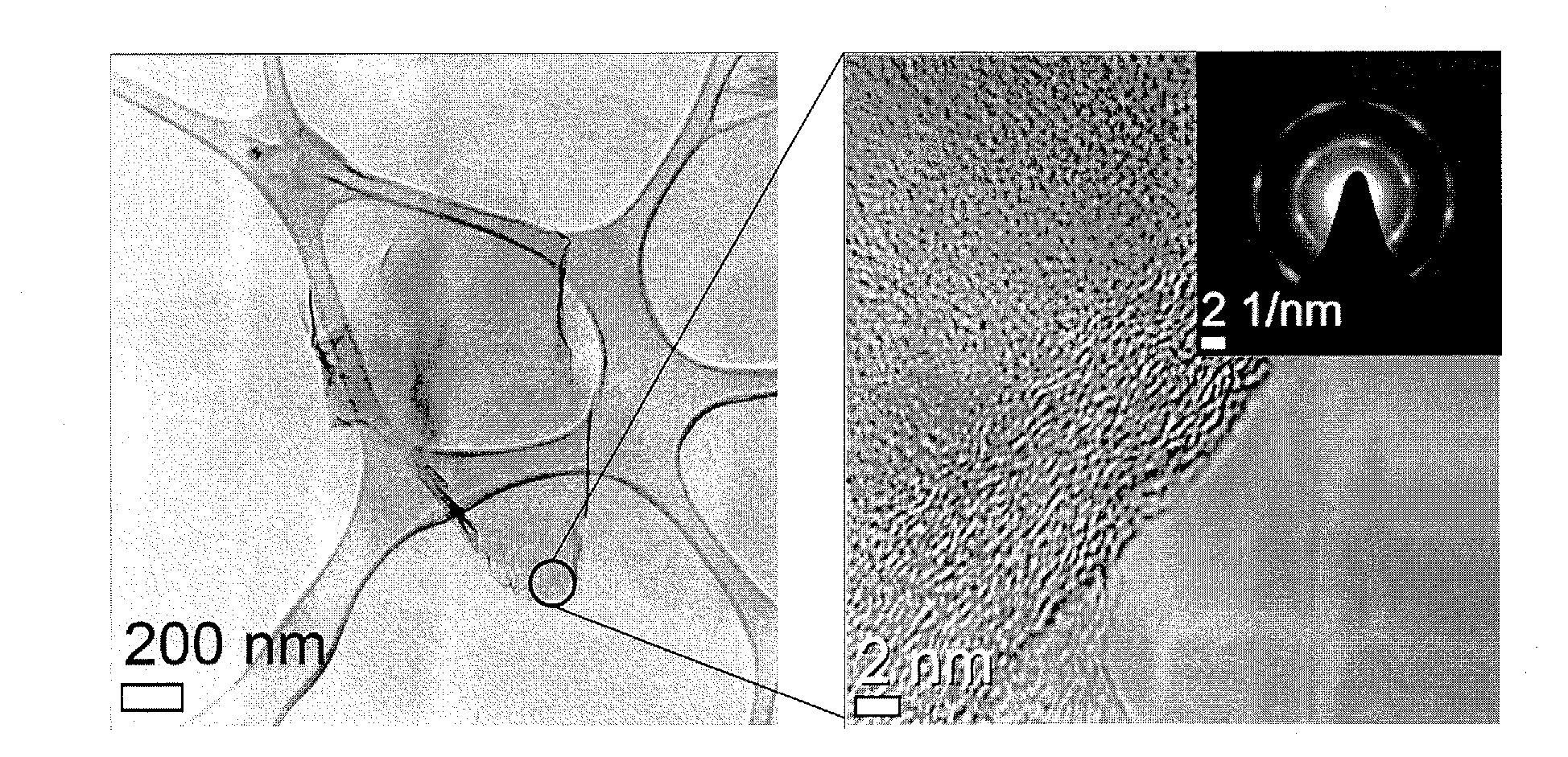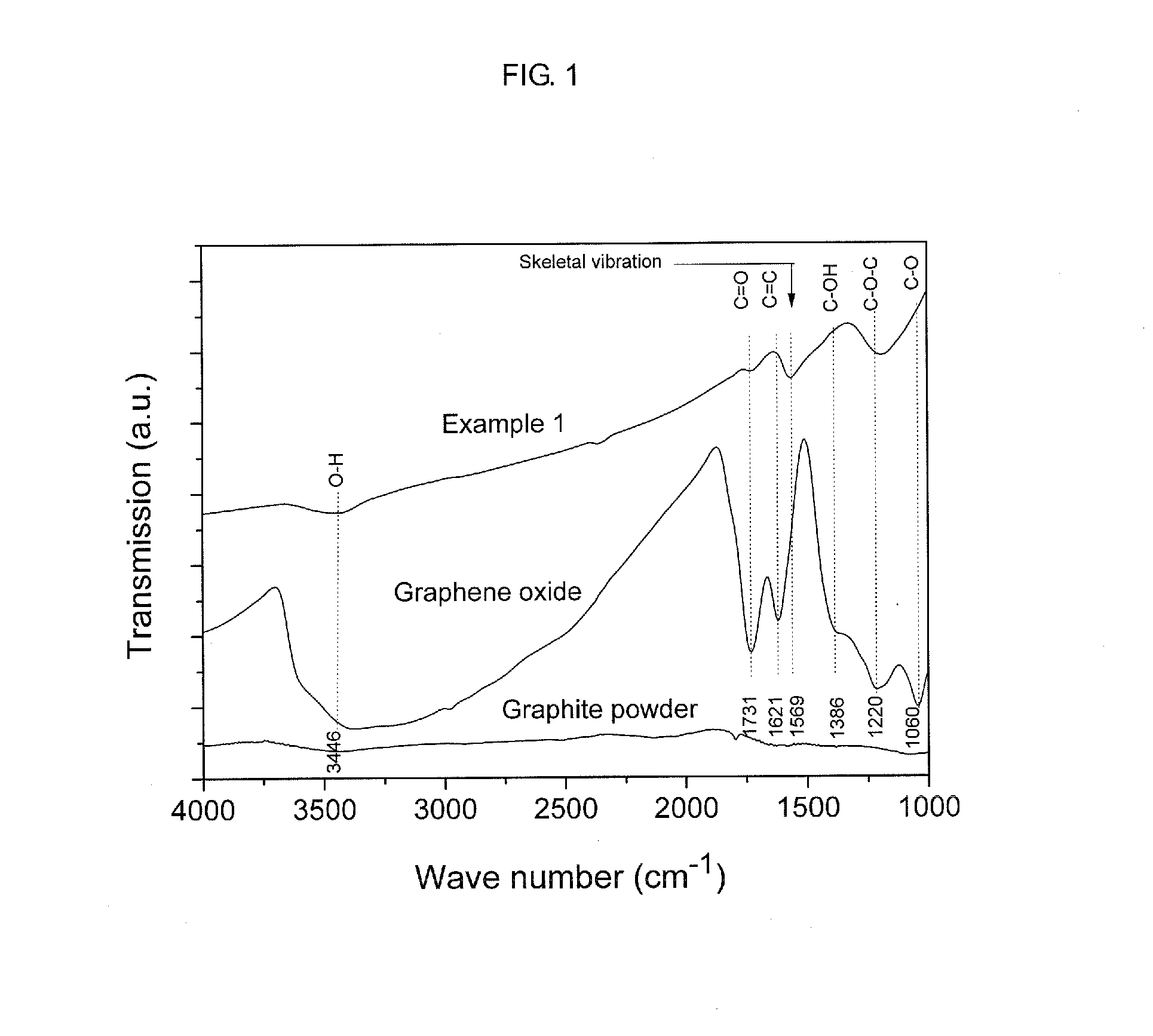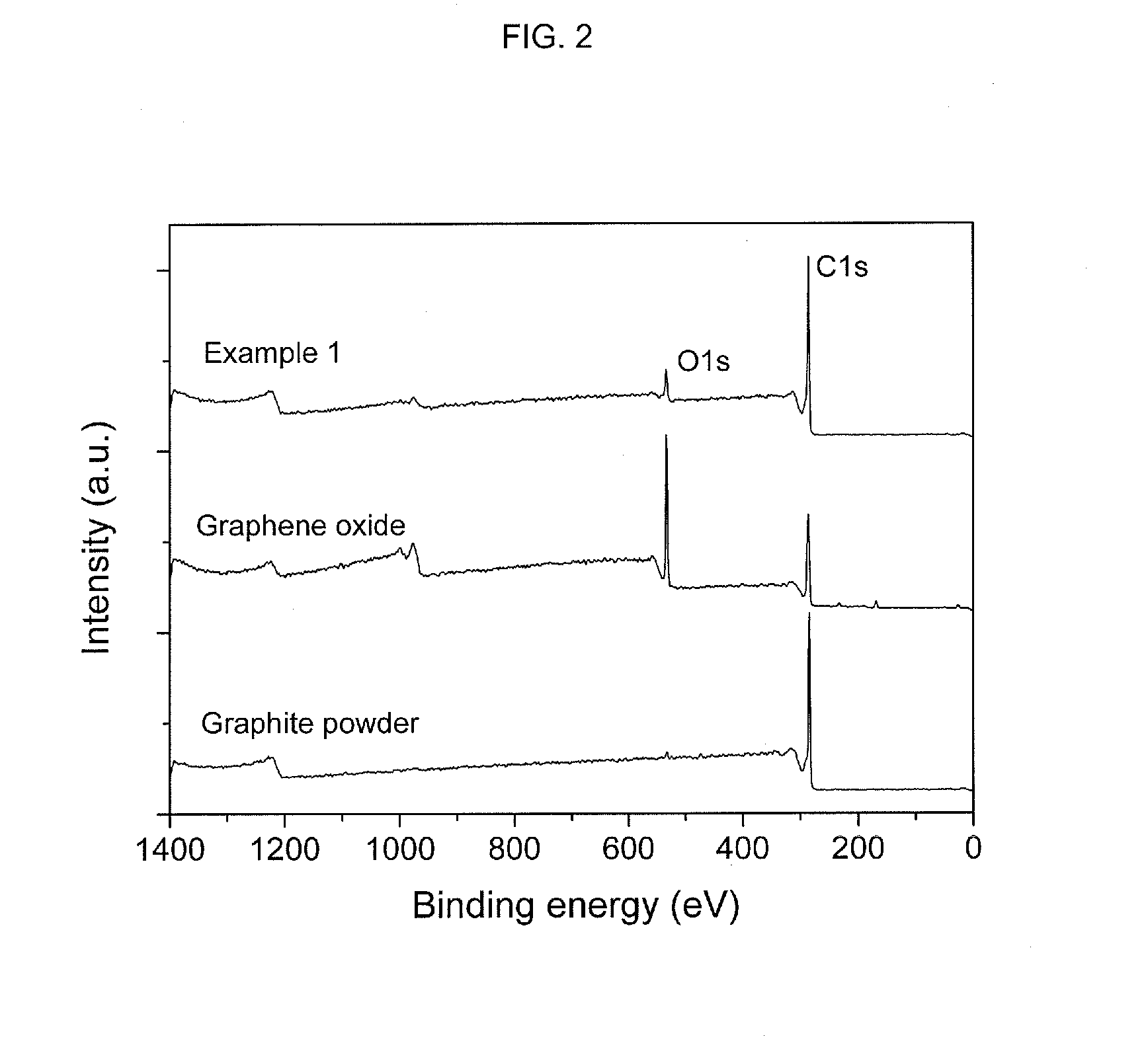Method for fabricating graphene sheets or graphene particles using supercritical fluid
a supercritical fluid and graphene technology, applied in the field of graphene sheets or graphene particles, can solve the problems of rare electrical conductivity, harmful to human bodies, environmental pollution, etc., and achieve the effects of high electrical conductivity, high efficiency, and high quality
- Summary
- Abstract
- Description
- Claims
- Application Information
AI Technical Summary
Benefits of technology
Problems solved by technology
Method used
Image
Examples
example 1
Fabrication of Graphene using Batch-Type Supercritical Fluid Process (1)
[0043]Graphene oxide was fabricated by a modified Hummers method, in which graphite powders were processed using strong sulfuric acid, K2S2O8 and P2O5 followed by processing with KMnO4 and H2O2. 1 g of graphene oxide was dispersed in 50 ml of methanol to adjust a concentration of the graphene oxide to 20 g / l. 3.5 ml, of graphene oxide dispersed methanol solution was introduced in 10 ml of a high temperature and high pressure reactor, which was made of alloy (Hastelloy C276). The reactor was introduced in a salt bath maintained at temperature of 400° C. and made to have pressure reached 300 bar. Under this conditions, deoxygenation was carried out for 2 hours. The thusly-generated graphene solution was cooled in 10° C. water and filtered through a filter, thereby separating and collecting the graphene. The collected graphene was dried for a day in a 60° C. vacuum oven, thereby removing methanol. FIG. 1 is a graph...
example 2
Fabrication of Graphene using Batch-Type Supercritical Fluid Process (2)
[0049]Graphene was fabricated according to the same method as employed in Example 1 excluding that the reaction time was 1 hour other than 2 hours. The fabricated graphene was analyzed through XPS and EA according to the same method as employed in Example 1 and the analysis results were shown in Table 1 as follows.
example 3
Fabrication of Graphene using Batch-Type Supercritical Fluid Process (3)
[0050]Graphene was fabricated according to the same method as employed in Example 1 excluding that the reaction time was 30 minutes other than 2 hours. The fabricated graphene was analyzed through XPS and EA according to the same method as employed in Example 1 and the analysis results were shown in Table 1 as follows.
PUM
| Property | Measurement | Unit |
|---|---|---|
| concentration | aaaaa | aaaaa |
| pressure | aaaaa | aaaaa |
| temperature | aaaaa | aaaaa |
Abstract
Description
Claims
Application Information
 Login to View More
Login to View More - R&D
- Intellectual Property
- Life Sciences
- Materials
- Tech Scout
- Unparalleled Data Quality
- Higher Quality Content
- 60% Fewer Hallucinations
Browse by: Latest US Patents, China's latest patents, Technical Efficacy Thesaurus, Application Domain, Technology Topic, Popular Technical Reports.
© 2025 PatSnap. All rights reserved.Legal|Privacy policy|Modern Slavery Act Transparency Statement|Sitemap|About US| Contact US: help@patsnap.com



